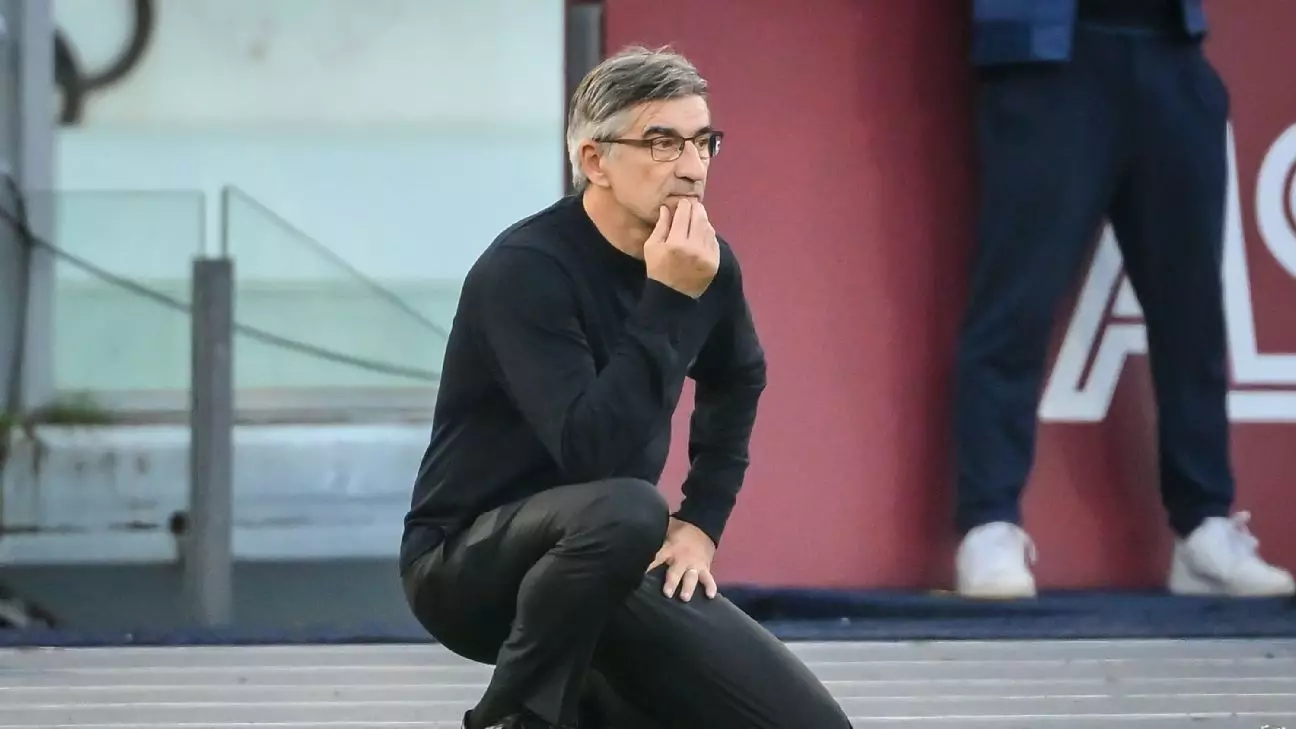The recent decision by AS Roma to part ways with head coach Ivan Juric underscores the turbulent landscape of football management, particularly within Italy’s Serie A. Juric’s sacking marks the second coach to be dismissed from his duties this season, illuminating the mounting pressure that clubs face to deliver results. Following a disappointing 3-2 loss to Bologna, which added to a dismal record of four defeats out of five league games, AS Roma finds itself languishing in a disheartening 12th position in the table.
The club’s official statement expressed gratitude for Juric’s efforts during his brief tenure, indicating recognition of the challenges he encountered. This acknowledgment hints at the complexities inherent in football management where factors beyond a coach’s control can often guide the direction of the team. The urgency to identify a successor reveals the critical nature of the situation, aligning with the expectations of a club that historically aspires to compete at the highest level.
Ivan Juric’s appointment was intended to bring stability to a club that had seen a revolving door of managers in a relatively short timeframe. His hiring followed the dismissal of Daniele De Rossi, a club legend, just months after the contentious firing of José Mourinho. Juric joined Roma in September, but only weeks later, the hope for revitalization turned into a crisis. While his tenure began positively with consecutive home victories, it was soon overshadowed by a disheartening dip in form.
The Croatian coach’s tactics and philosophy became central to the critique of his management. His introduction of a 3-4-2-1 formation initially seemed promising but quickly became susceptible to exploitation by opposition teams. The reliance on man-to-man marking proved incompatible with a squad that thrives on a possession-based style of play, leaving gaps that opponents were quick to exploit. The consequence was a significant increase in defensive blunders and missed opportunities, evident in the chaotic match against Bologna.
Analyzing the Defensive Weaknesses
Roma’s defensive frailties were starkly highlighted during the defeat to Bologna, where crucial errors in both defense and attack marred their performance. The absence of key player Paulo Dybala due to injury left a significant void, rendering Roma’s attack less potent. Dybala’s contribution on the field is not merely as a goal scorer; his playmaking abilities are essential in knitting together offensive plays. With him sidelined, the team struggled to find a coherent attacking rhythm, exacerbating their plight.
Bologna took advantage of this weakness, striking early and dictating the pace of the match. Roma’s psychological challenges in such high-pressure situations became apparent, revealing a team lacking confidence and direction. Even when the team managed to equalize through Stephan El Shaarawy, their inability to maintain composure and balance caused them to concede further goals almost immediately.
As the search for a new head coach begins, AS Roma’s management faces a critical juncture. The rumored consideration of Roberto Mancini, the former Italian national team coach, suggests a potential shift towards experienced leadership to navigate the club through its current crisis. Transitioning to a new managerial strategy could bring about a fresh approach that addresses the shortcomings evident under Juric’s reign.
Looking ahead, AS Roma will confront a harrowing schedule that includes matches against top-tier teams, such as reigning champions Napoli and the formidable Atalanta. These encounters will test the resilience of the squad, already shaken by their recent performances. It is imperative that the next appointed coach revitalizes the squad’s morale while also instituting a cohesive tactical plan that plays to their strengths.
The developments at AS Roma reflect broader themes within modern football—high expectations, transient coaching tenures, and the impact of tactical alignment on team performance. As the club seeks to turn the tide, it must harness strategic insights drawn from past missteps while fortifying its future ambitions. The ensuing weeks will be pivotal in determining AS Roma’s season trajectory, marking either a resurgence or further descent into disarray.

